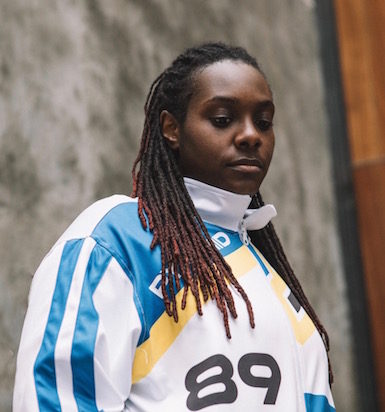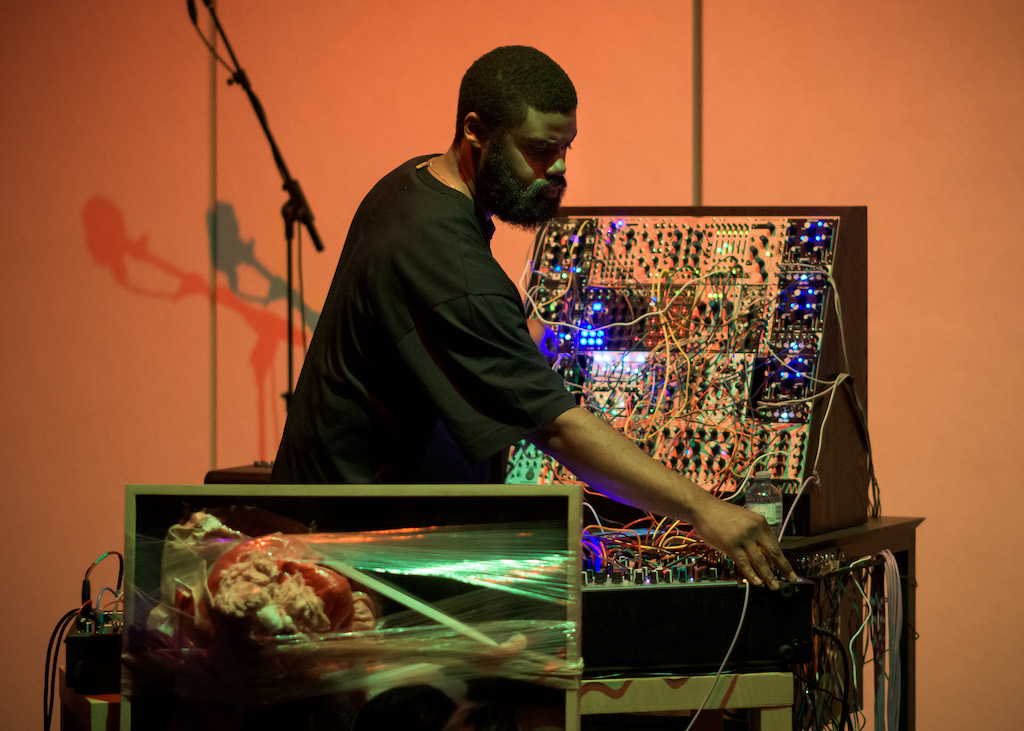[ad_1]

Kevin Beasley, A view of a landscape: A cotton gin motor, 2012–18, installation view, at the Whitney Museum.
RON AMSTUTZ/COURTESY CASEY KAPLAN, NEW YORK/COLLECTION OF THE ARTIST
When Kevin Beasley first took an interest in the whirring motor of a vintage cotton gin that now serves as the centerpiece of his eye- and ear-catching show at the Whitney Museum in New York, the sound it might have made was not on his mind.
“The first gesture of the project was acquiring the motor,” the artist said of the machine, which he acquired from a farmer in Alabama. “The second was contextualizing it—thinking about this object, its history, its method of manufacture.”
Then came mention of the specter of sound. “I had a conversation with Bobby, the person I bought it from, standing over the motor. It was the first time I’d seen it in person. He brought me to it and said, ‘Well, this is it.’ He told me how it ran and gave me information I already knew. But then he said, “I still remember the way it sounds.”

Kevin Beasley.
IAN DOUGLAS
The reminiscence gave Beasley a way to start to process what he wanted to do with a relic so resonant, given cotton’s prominence in the history of his homeland—rural Virginia—and the legacy of slavery that haunted its planting and picking in the past.
“He didn’t have words for it—language failed him,” Beasley, a 33-year-old artist based in New York, said of the farmer. “That told me I needed to get the motor started.”
The motor and its aural aspects are central to an exhibition, “Kevin Beasley: A view of a landscape,” that through March 10 fills the Whitney’s eighth floor with related sculptures and a spacious listening room in which one can hear the machine’s abstracted rumble and roar. That room has also doubled as an occasional performance space for musicians and artists commissioned to respond to the show in a program that will have a high-profile finale on Saturday. Jlin, an electronic-music maker from Gary, Indiana, is in town to activate the artwork—and activity in excess seems likely from a musician whose work is intensely kinetic and charged.
“I had placed so much in the object and the process of acquiring it that I was nervous about doing something with it that would fall flat or wouldn’t deliver the impact that I was experiencing,” said Beasley, (the subject of an “ARTnews Accord” in 2017). But once the notion of working with it as sonic sculpture presented itself, he developed the idea of performance activations that served as “the impetus behind the whole project.”
“There is history in certain narratives and storylines, a sort of century-old transition of technology and looking at different methods of manufacturing, mechanization, analog to digital—all this stuff,” Beasley said. “But the question is: What for? Is it an archive? Are we just here to look and reflect? Or is it going to be active? For me an important reason for getting the motor going again was to drive something, to generate something. The last time time the motor was on, it was operating with people working around it.”
To accentuate the exhibition, Beasley enlisted collaborators and co-conspirators from different musical climes. The program started in January with a duet featuring Beasley himself with Taja Cheek, who makes smeary, bleary psychedelic soul music as L’Rain. Later that month was a performance by the deliriously dexterous drummer Eli Keszler, a New York fixture in various art-music circles as a solo artist—his recent album Stadium is a standout—and with others (the great saxophonist Joe McPhee, the electronic-music producer Oneohtrix Point Never, and many more).
“It immediately seemed like something that offered a lot of different avenues and ways to go through it,” Keszler said of a project he began working on when the motor was still in Beasley’s Brooklyn studio. For his performance, he played with Sensory Percussion, a software and hardware interface with sensors that can be triggered in different ways. “You train them to listen, in a certain sense, and then you can route the signal in any way you can imagine, so the installation gets channeled and activated. It’s a subtractive process because you’re working with incredibly dense material, full-spectrum noise that can be filtered or processed.”
The open-endedness and abstraction of the work was an asset, Keszler said. “One thing I love about Kevin’s work in general and this piece in particular is that there are a lot of questions and no attempt to dogmatically answer them. It’s more about different proposals or opportunities for people, whoever they are and wherever they come from, to enter and reflect on really complex issues.”
In February, a third event billed as a performance by Beasley himself featured a surprise appearance by Ralph Lemon, who read—and screamed—poetry while a cast of dancers and fellow vocalists (Angie Pittman, Darrell Jones, Okwui Okpokwasili, Stanley Gambucci, and Paul Hamilton, the last one in a tank-top emblazoned “Brotha-fucker”) writhed around to sounds evocative of dystopian ambient music and Detroit techno.

Jlin.
EBRU YILDIZ
The fourth and final installment, with three set times scheduled for Saturday night, features a rising star in Jlin, whose increasingly expansive sound—with origins in the strain of whiplash-inducing dance music known as Chicago footwork but developments that have grown more multivalent over time—has made her a favorite of the avant-garde and beyond. To prepare, Jlin visited New York last year to see the motor and hear what it had to say. Then Beasley sent her different recordings of the sound that she plans to process live in a matter that will likely be catalytic.
Asked if rhythm will figure in, Jlin said, “This is me we’re talking about—you can answer that!” But she has a capacity to wander far and wide, as in music she recently made as an alternately frenetic and serene soundtrack for dance work by the British choreographer Wayne McGregor.
However it goes, Jlin said she is excited to be a part of Beasley’s project. “What he’s doing is brilliant,” she said. “For so many reasons, and especially as descendants of slaves, to take something that was such a scar on our history and bring it to the forefront in an exhibition is phenomenal.”
[ad_2]
Source link

